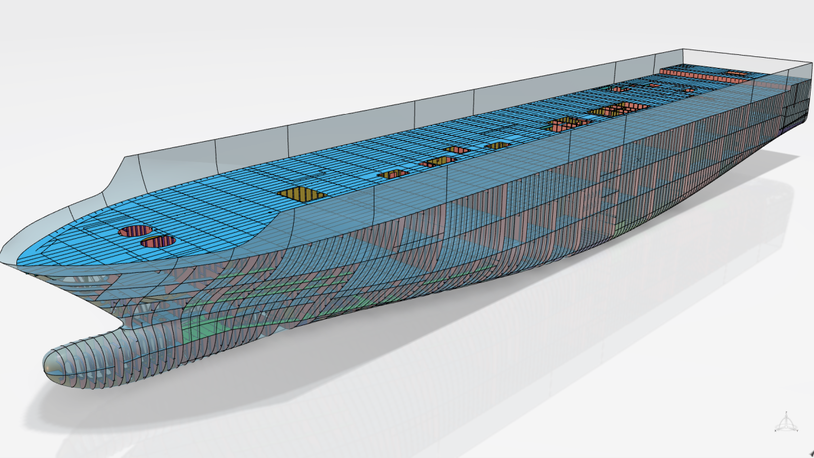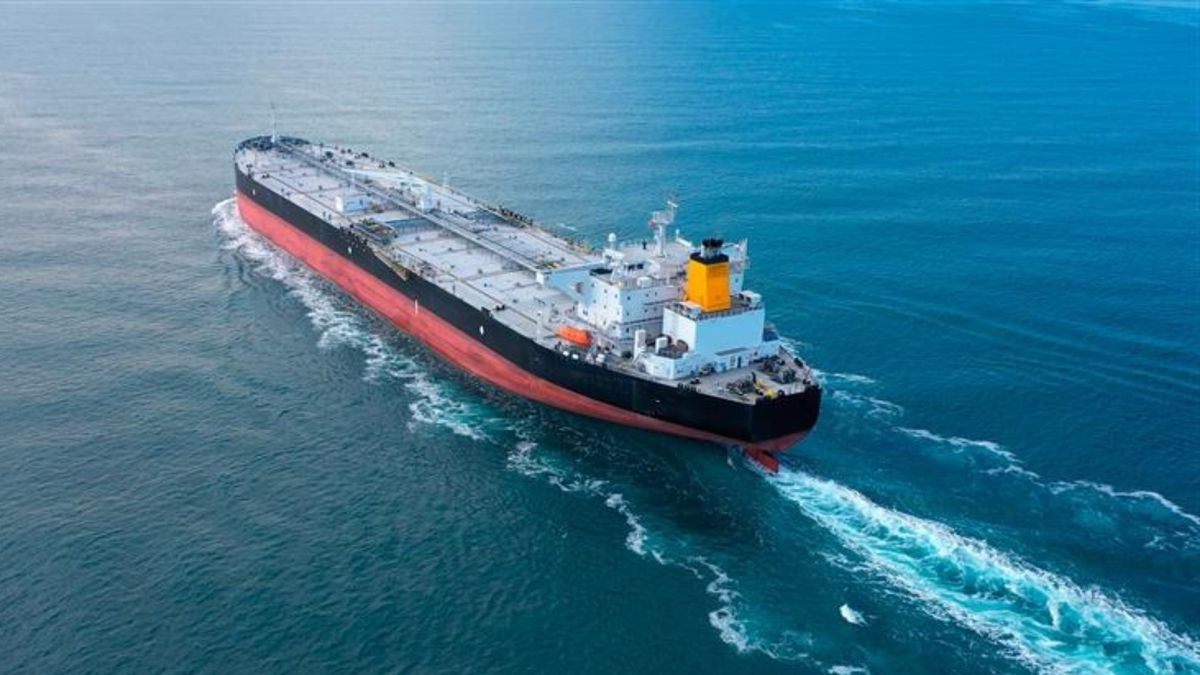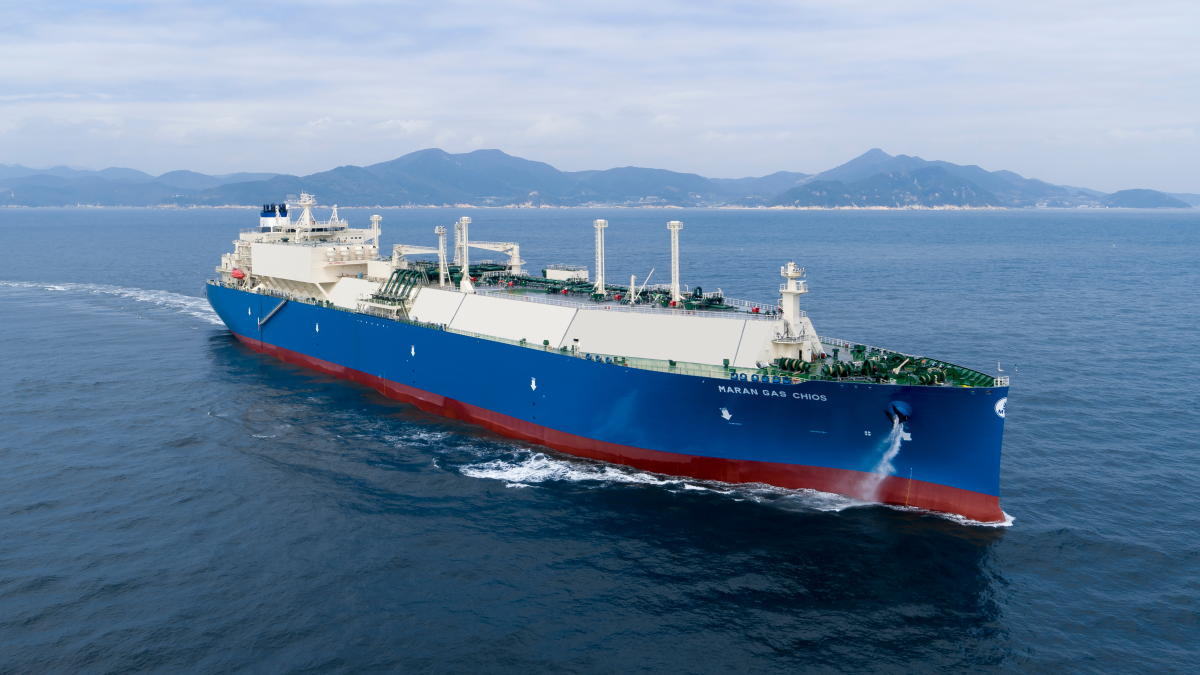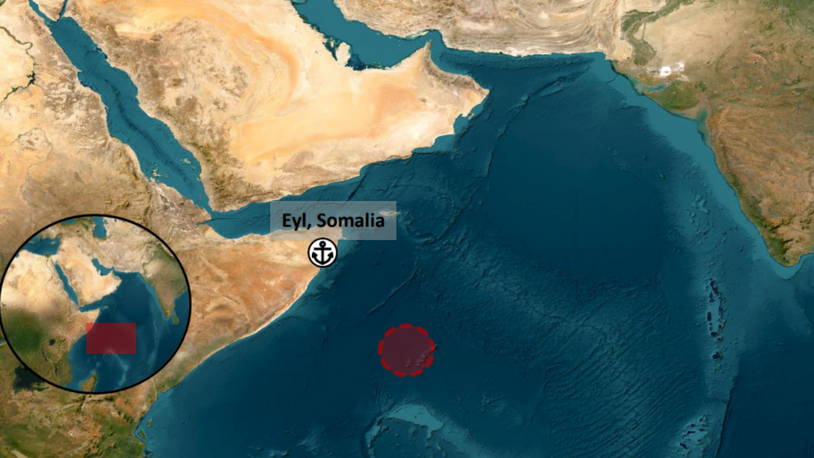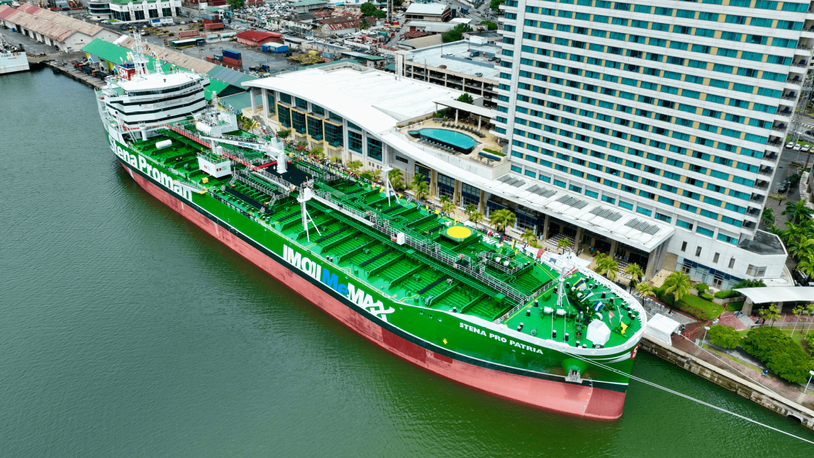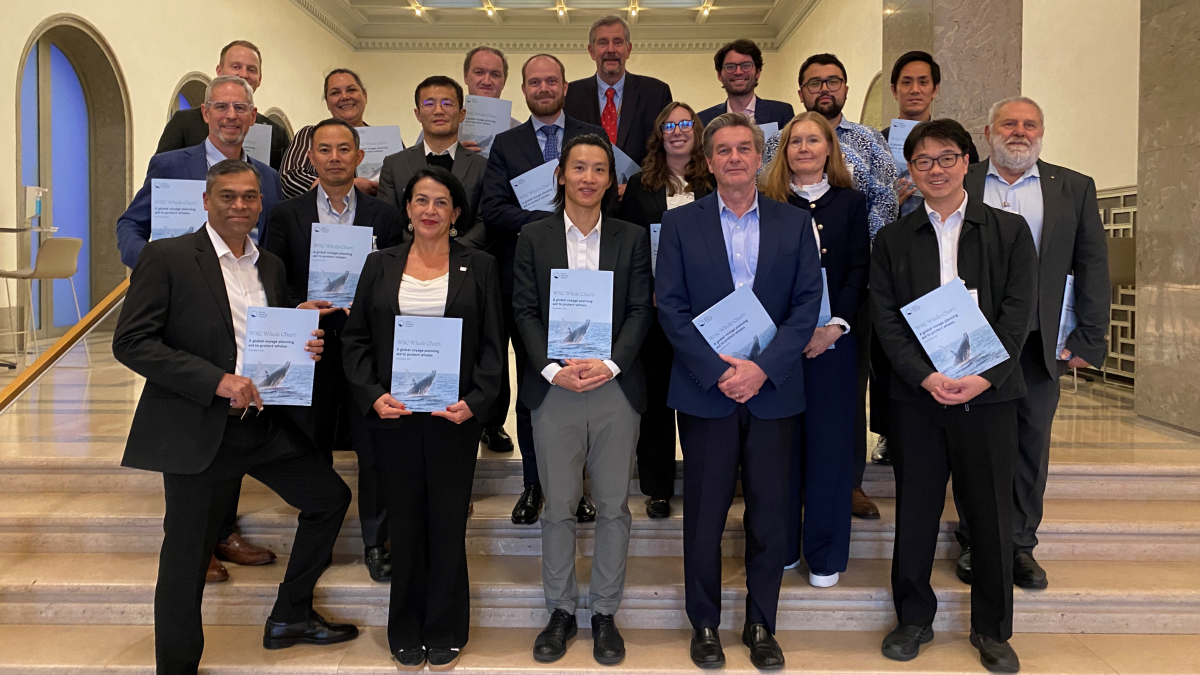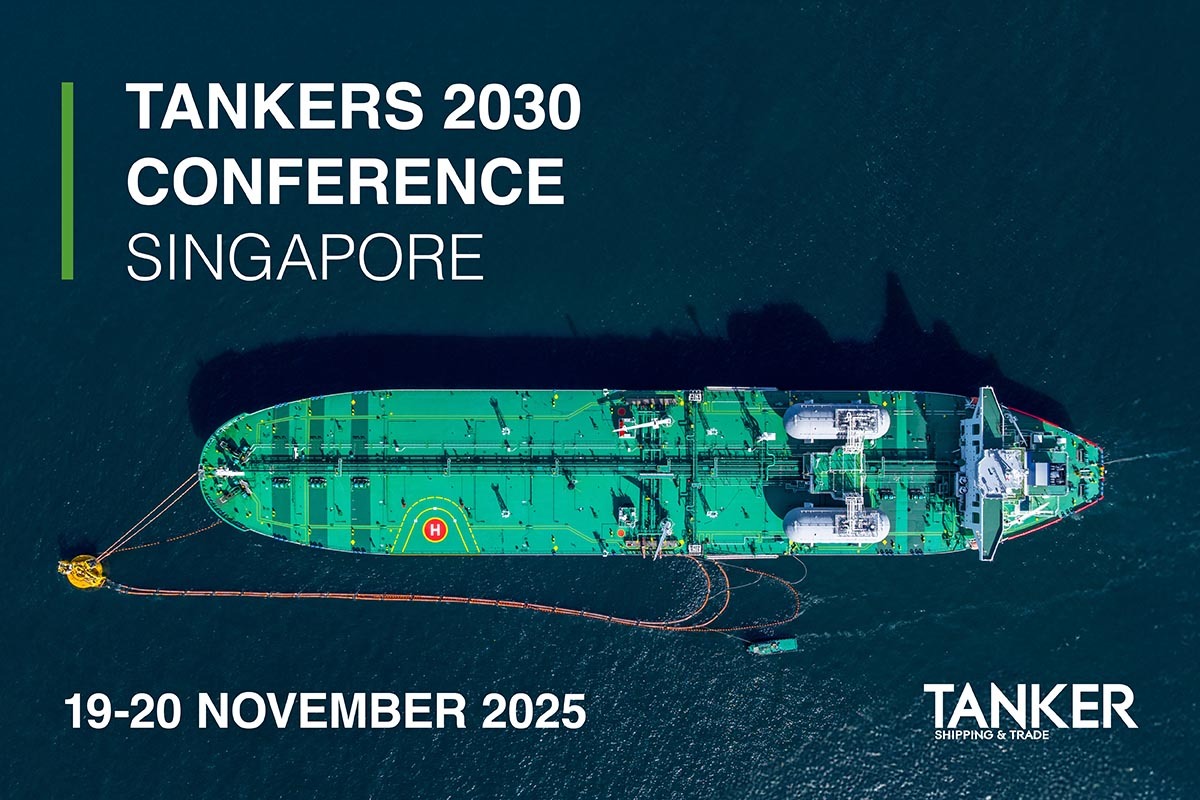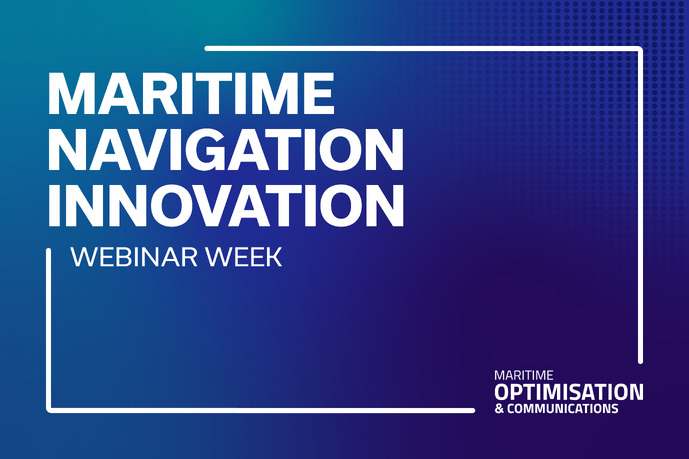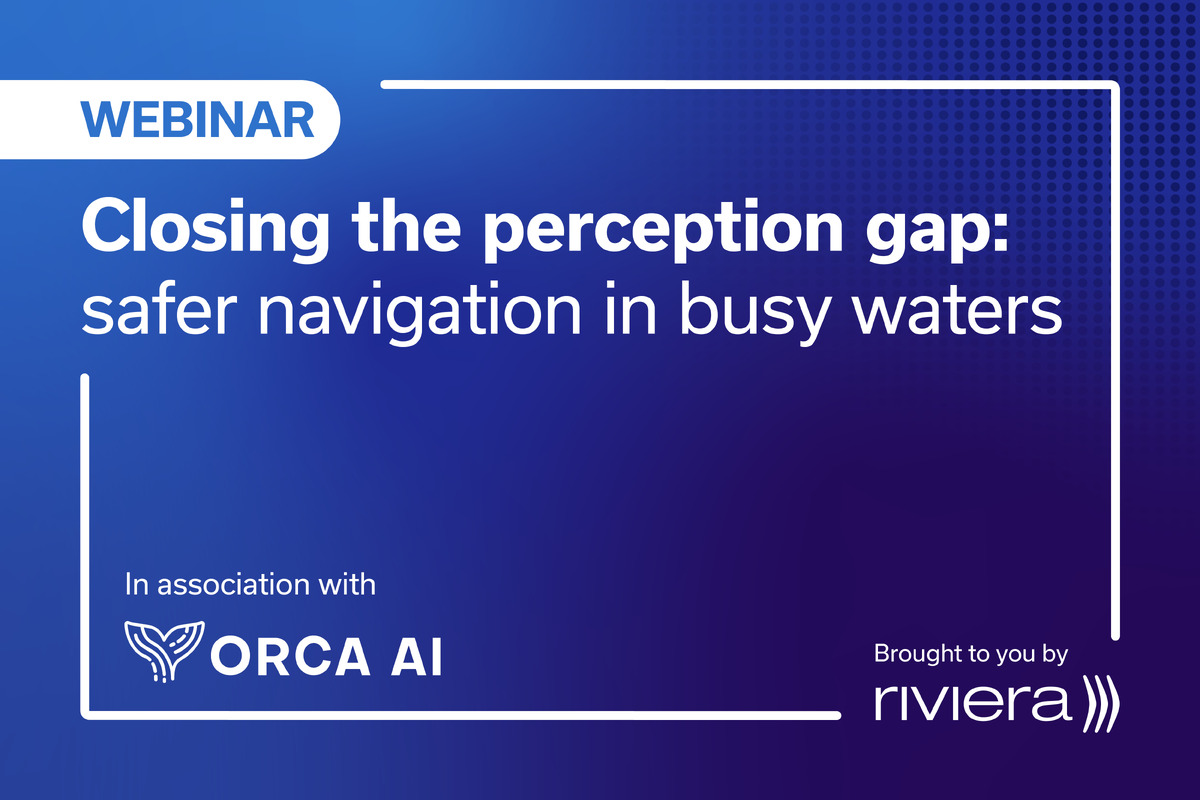Business Sectors
Contents
Jumboise solution may make LNG conversions more attractive for box ships
One of the drawbacks for converting an existing container ship to burn LNG as a fuel is sacrificing revenue-generating cargo space for the fuel tanks
French cryogenic cargo containment engineering firm GTT, however, is working on a fuel tank solution that will ‘jumboise’ the vessel, expanding its container-carrying capacity.
“GTT is working a new concept of LNG conversion with jumboisation,” GTT head of product lines, LNG as fuel division Alexandre Tocatlian told Riviera Maritime Media.
Mr Tocatlian said GTT is investigating a business case which would leverage additional cargo capacity to compensate for the LNG conversion cost. “A ship section with LNG and cargo capacity is built in our LNG Block suppliers in South Korea or China. The section is then floated and welded to the existing container vessel,” he explained. He noted that container ship lengthenings have been realised several times.
Such innovations would make converting a container ship to burn LNG as a fuel more attractive, particularly with the adoption of the Energy Efficiency Existing Ship Index (EEXI) amendments to Marpol Annex VI due in June 2021.
“Yes, we see EEXI improving the business case, driving owners to LNG conversion,” said Mr Tocatlian. He sees particular advantages for the first movers. “There is a growing need for 15,000-TEU container vessels and good candidates for conversion among the 9,000-TEU to 14,000-TEU range. Instead of losing 300 TEU, the jumboisation will bring an additional 1,300 TEU on board, representing several million dollars of revenue per year,” he said.
A GTT tank was used in the pioneering conversion of the LNG-ready ultra-large container ship (ULCS) Brussels Express (ex Sajir) at Huarun Dadong Dockyard in Shanghai.
Container shipping line Hapag-Lloyd reported the cost for converting the 15,000-TEU vessel was US$35M. It is anticipated the price tag for such conversions will fall as shipyards and equipment, technology and engineering providers gain experience. The box ship’s carrying capacity was reduced as a result of the conversion to make room for the fuel tank.
“The overall LNG tank structure with the fuel preparation rooms on top take the place of approximately 300 TEU for a maximised LNG autonomy in the available space,” noted Mr Tocatlian.
A prefabricated membrane fuel tank constructed within an exoskeleton was built quayside. Designed and engineered by GTT, the 6,700-m3 capacity fuel tank was lifted into the vessel’s hull and welded in place.
As for the rest of the conversion, Brussels Express’s Diesel-cycle, two-stroke MAN B&W 9S90ME-C10.2 was modified to 9S90ME-C10.5GI. Main components including high-pressure fuel pipes, cylinder cover, cylinder liners and piston crowns and rings were replaced, with new components such as gas injectors, gas control block, adaptor block, gas chain pipes, sealing oil system, and GI(E) control system installed.
Following the successful conversion of Brussels Express, Hapag-Lloyd has gone a step further with its commitment to LNG as a fuel, following its US$1Bn order for six 23,500+ TEU ULCS from South Korea’s Daewoo Shipbuilding & Marine Engineering (DSME).
Each of the new ULCS vessels will be fitted with a two-stroke, high-pressure, Diesel-cycle dual-fuel MAN B&W 11G95ME-GI Mk10.5 engine that will be capable of operating on LNG or traditional compliant fuel.
MAN Energy Solutions reports the engines will be built in South Korea and will be fitted with selective catalytic reduction technology to meet IMO Tier III emissions standards. The first engine will arrive at the shipyard in May 2022. DSME plans to deliver the six ULCSs between April and December 2023.
The engines will operate on LNG but have sufficient tank capacity to operate alternatively on conventional fuel. For the newbuilds, Hapag-Lloyd is said to be considering utilising two LNG bunker tanks on deck of a new IMO Type B tank of 18,000 m3 constructed with cryogenic high-manganese steel in preference over the normal membrane type.
Hapag-Lloyd is said to hold an option for six more 23,500-TEU+ LNG-fuelled box ships.
The advantages of using membrane fuels tanks for container ships was highlighted at a recent Riviera conference. Speaking at Riviera’s recent LNG Bunkering & Refuelling Conference, Americas, Mr Tocatlian’s colleague, USCG Rear Adm (ret) Kevin Cook, an expert technical advisor for GTT North America, noted that CMA CGM selected membrane fuel tanks for CMA CGM Jacques Saade and its eight newbuild sister ships because of their “ability to efficiently fill the volume, pretty much the ship’s natural hull shape. This provides the maximum fuel capacity and minimum loss of container carriage volume,” said Adm Cook.
Adding six more LNG-fuelled ULCSs
GTT’s reference list could grow even further following the announcement by CMA CGM at the opening session of TPM it was committing to adding a further six LNG-fuelled box ships to its fleet. When it comes to LNG as a fuel, the French container shipping giant is all in.
That was clearly the signal from CMA CGM Group chairman and chief executive Rodolphe Saadé when he said the six LNG-powered, 15,000-TEU ULCSs would be deployed to the US market as part of the Group’s ongoing efforts to improve air quality and drive forward the energy transition of the shipping industry.
Delivery of the first of these new vessels is set for October 2021, and all ships will be fully operational by the end of 2022. All six 15,000-TEU vessels will be deployed on CMA CGM’s Pearl River Express (PRX) line, which sails from China to the Port of Los Angeles.
The CMA CGM Group is currently operating 12 LNG-powered container ships, a fleet that will grow to 32 container ships of various sizes by 2022. CMA CGM said using LNG as a fuel is one of the first steps towards achieving its ambitious objective of carbon neutrality by 2050.
With the commitment of the six LNG-powered box ships to the US, CMA CGM said American customers would be able to choose to transport their goods using LNG, a new technology it said helps to preserve air quality by eliminating almost all atmospheric pollutants.
Recently, the group unveiled ACT with CMA CGM+, a set of services designed to allow customers to analyse, reduce and offset their environmental impact.
Using LNG as a fuel delivers a reduction of 99% in SOx, 91% PM emissions and 92% in NOx emissions. Importantly, as shipping moves towards decarbonisation, an LNG-powered vessel emits up to 20% less CO2 than conventional fuel-powered systems.
Investing in alternative propulsion solutions
CMA CGM continues to invest in alternative solutions such as wind-assisted propulsion, hydrogen engines and green fuels. In 2019, CMA CGM became the world’s first shipping company to successfully test a biofuel comprising 20% recycled plant oil and forestry waste. It has pledged that alternative fuels will cover at least 10% of its consumption by 2023.
With EEXI looming, CMA CGM is working on technologies to raise its fleet’s efficiency and cut energy consumption: using re-profiled bow shapes to achieve a better hydrodynamic performance, and propeller and engine innovations to cut CO2 emissions and oil and fuel consumption.
Riviera will provide free technical and operational webinars in 2021. Sign up to attend on our events page
Related to this Story
Events
International Bulk Shipping Conference 2025
Tankers 2030 Conference
Maritime Navigation Innovation Webinar Week
© 2024 Riviera Maritime Media Ltd.




